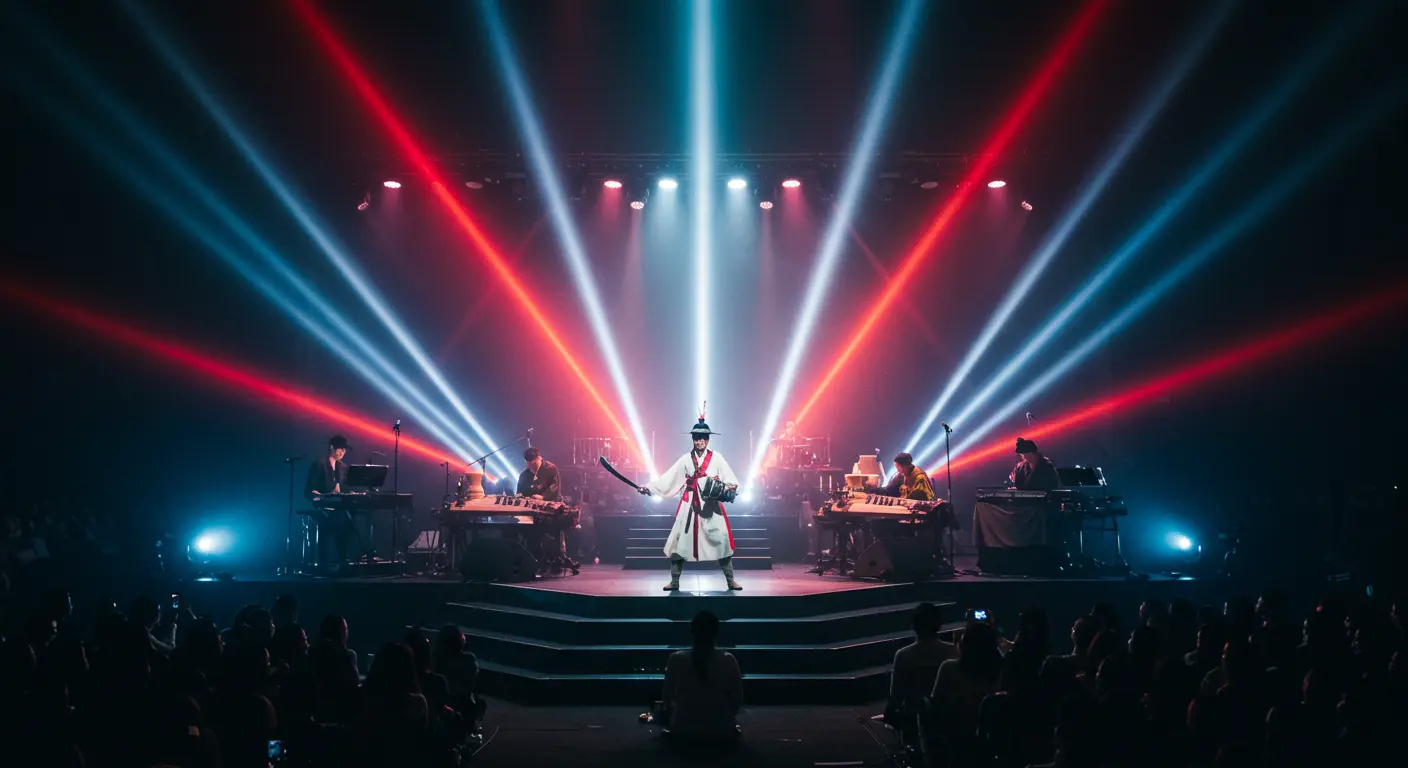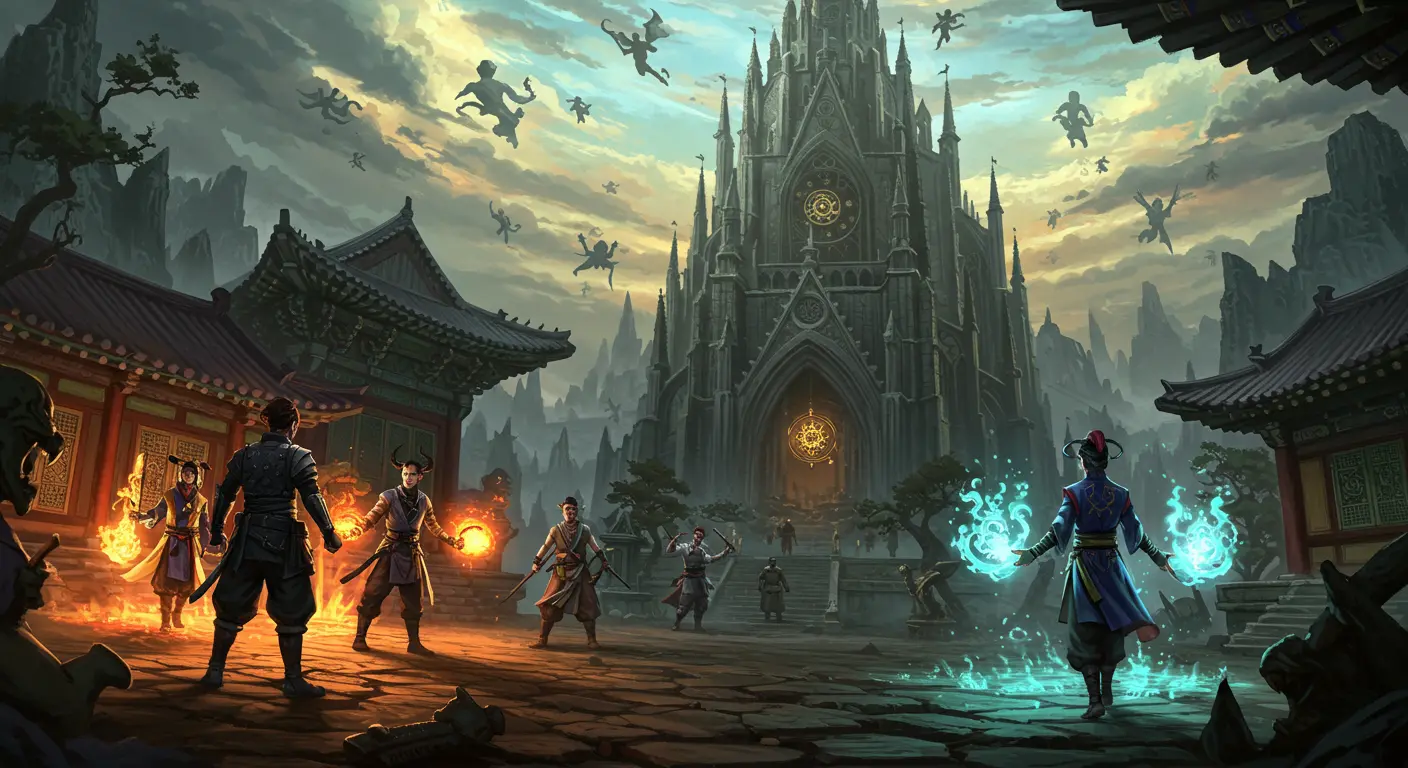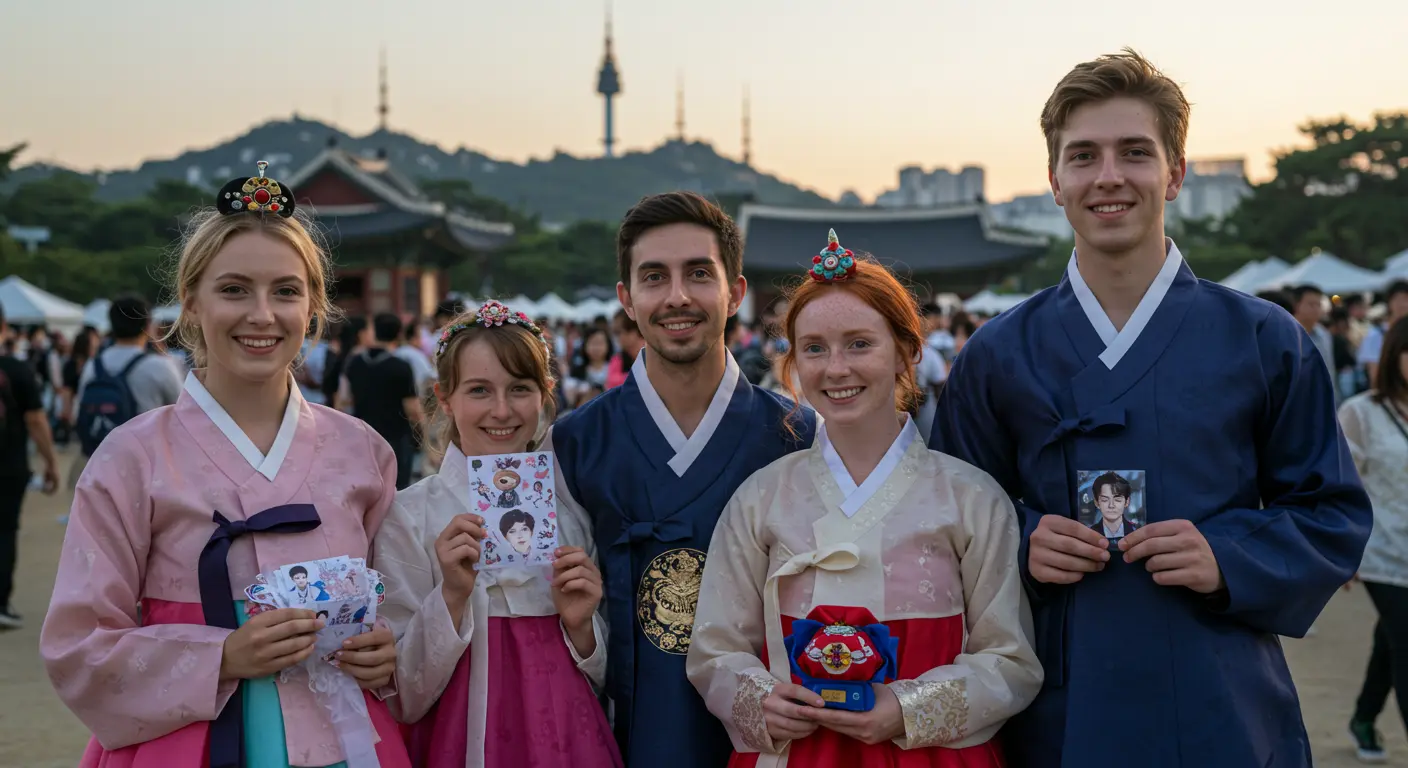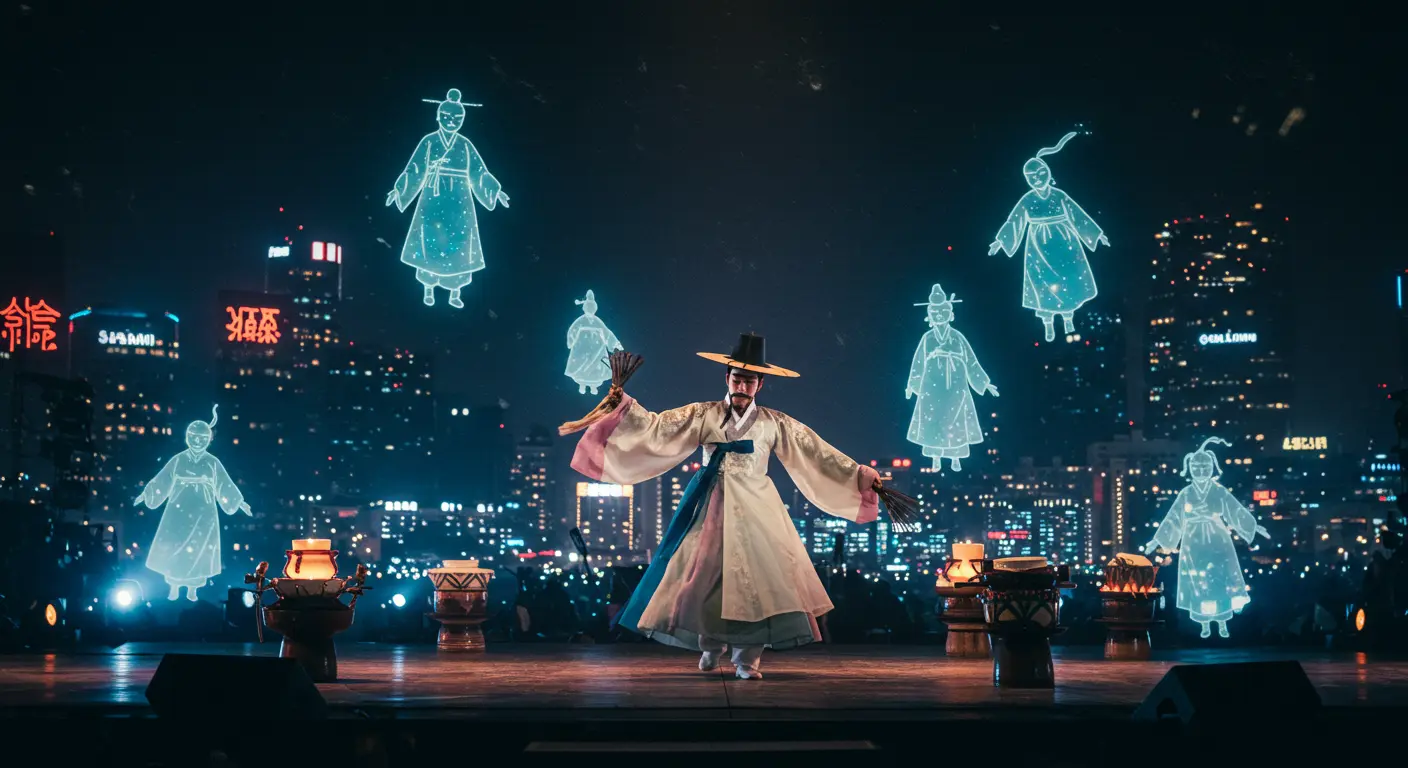To dive deeper into this global phenomenon, we’ve put together a four-part series
Korean Folk + K-pop Worldview (current article)
Fandom viral success stories (next week)
“Why do Western fans go crazy for Korean goblins and ghost stories?” K-Pop Demon Hunters is more than just a music project – it’s a perfect example of cultural fusion, with a modern twist on traditional Korean folklore that succeeds on the global stage. 😊
Korean folklore in the K-Pop Demon Hunters universe: tradition meets the future
In this article, we take a deep dive into how K-Pop Demon Hunters incorporates elements of traditional Korean folklore into modern K-pop. It explores how Korea’s unique folklore, including goblins, ghosts, and shamanism, has evolved into a global music trend.
He explains with specific examples how the meeting of tradition and modernity has become a new creative force, and how this has appealed to international fans. Deep cultural background of the K-Pop Demon Hunters universeThis is a complete guide to understanding
This analysis is based on official sources from the Korean Cultural Heritage Administration and the National Folklore Museum of Korea. We have also included expert opinions on modern interpretations of traditional folklore.
Table of Contents 📋
1. How we reinterpreted traditional Korean culture in the K-pop Demon Hunters universe 🎭.

As of August 2025, the key to the global success of the K-pop Demon Hunters universe is its unique approach to modernizing traditional Korean culture. As Yoo Yoo-seok said on the August 19th episode of SBS’s Time to Shine, “It’s amazing how K-Pop Demon Hunters has resonated around the world.” The perfect fusion of tradition and modernityThis is the biggest strength of this project.
The “Saja Boys” in the anime are more than just characters; they’re built on the jeoseung-saja motif of Korean shamanism. Having the main characters come from a family of shamans was also a deliberate design choice to seamlessly fuse the traditional worldview with the K-pop narrative.
🎨 3 key strategies for reimagining traditional culture
1) Visual modernization: Redesigning hanbok elements into a modern performance outfit
2) Epic convergence: Incorporating shamanic rituals into K-pop performance structure
3) Symbolic conversion: Reimagining traditional ghosts as compelling characters
According to a 2025 study, there are an estimated 200,000 to 300,000 shamans in South Korea, and modern Koreans are turning to traditional shamanic beliefs amidst economic and social challenges. This is the cultural soil that underpins the success of K-pop Demon Hunters.
2. The Modern Transformation of a Korean Folk Character: From Goblin to Demon Hunter 🧙♀️

In Korean folklore, goblins and ghosts are more than just objects of fear. In Korean shamanism, a complex pantheon of spirits and ancestral deities exist, and they are believed to be multi-layered beings that influence human history.
K-pop Demon Hunters transformed these traditional beings into characters that a 21st century global fanbase can relate to. Korean folklore’s grim reaper reimagined as a modern idol groupfor example.
| Traditional Folk Characters | A modern reimagining | Global appeal points |
|---|---|---|
| The Grim Reaper (Saja) | Saja Boys Idol Group | Similar to the western Grim Reaper, but more attractive |
| Goblins | Mischievous helpers | Differentiate yourself from Western trolls/fairies |
| Mudang | K-pop Idol Hunter | Powerful Women as Modern Shamans |
The popularity of shamanic themes in entertainment in 2025 reflects social unrest, with analysts suggesting that global audiences are finding solace in the familiar motifs of traditional Korean shamanism.
3. where K-pop traditional motifs meet Western fantasy 🌍.

In 2025, K-pop’s global dominance is not just a phenomenon, it’s an unstoppable force, rewriting the rules of music, culture, and influence on a global scale. At the intersection of K-pop’s traditional motifs with Western fantasy culture, a new creative force is emerging.
While the Western genre of Demon Hunter is largely based on the Christian good and evil structure, K-pop Demon Hunters are The complex, multi-layered spiritual worldview of Korean shamanismto build richer narratives.
🔮 Key elements of fusing Eastern and Western fantasy
– Western Fantasy: Dichotomous Good vs. Evil, Hero’s Monolithic Journey
– Korean folklore: Composite Spiritual Being, a Worldview of Harmony and Balance
– Fusion results: Multi-layered characters, complex moral dilemmas
As K-pop has evolved into a global phenomenon, it has influenced many aspects of entertainment and culture, from music production and performance styles to fashion trends and digital content creation. This cultural influence is behind the global success of K-pop Demon Hunters.
In particular, the Korea Cultural Heritage AdministrationAccording to official data from the Korea Tourism Organization (KTO), the overseas expansion of traditional Korean culture is expected to surge in 2025, which is attributed to the influence of K-pop and K-dramas.
4. from shamanic ritual to K-pop performance: A modern transformation of ritual 🎪.

In Korean shamanism, shamans serve as a bridge between the earthly and spiritual realms, acting as intermediaries to help people communicate with spirits, ancestors, and various deities to solve problems, cure illnesses, and make important life decisions. K-pop Demon Hunters reimagines this traditional role as a modern performance.
Consider how key elements of traditional gut rituals have been projected onto K-pop performances:
🥁 Good Rites vs. K-pop performance
Traditional Good: Spiritual communication through shamanic invocations, dance and song
K-pop stage: Idols’ stage presence, choreography and music connect with audiences
Commonalities: Collective catharsis and purification through performance
Even in modern Korea, urban professionals seek advice from shamans on important business decisions, marriage, children’s education, and health issues, and many modern Koreans maintain home altars where they perform rituals to honor ancestors and household spirits during holidays and major life events.
UNESCO’s Global Youth Culture 2025 report ranked K-pop as the number one influence on Gen Z, surpassing Hollywood in cultural influence. Korean language learning apps also saw a 20% increase.
The success of K-pop Demon Hunters is more than just entertainment, Building cultural bridges through modern interpretations of traditional Korean ritualsin the past few years.
For more information, see the National Folk Museum English sitewhich provides an in-depth understanding of the contemporary meaning of Korean shamanic culture.
5. The new appeal of Korean folklore embraced by global fandom 🌏.

In the year 2025, the K-pop Demon Hunters universe is beloved by fans around the world because of the unique appeal of Korean folklore, as opposed to the Western binary of good and evil, Complex and human characters from Korean folkloreIt’s a refreshing change for this global audience.
International fans are particularly fascinated by traditional folklore characters such as tigers and magpies, which they describe as “a whole new form of mythology,” and see brought to life in animation. The controversy over cultural appropriation in China has also been addressed by the Korean animators’ commitment to strict historical accuracy.
🎯 Key elements of global appeal
– Cultural authenticity: Accurate depiction of real Seoul environments (Namsan Tower, Korean clinics, jjimjilbangs, subway stations)
– The complexity of the character: Multilayered beings with no clear-cut good or evil
– Visual originality: Costume design with a modern twist on hanbok elements
South Korea’s ranking of 12th in the Brand Finance Global Soft Power Index 2025, up from 15th in 2024, is a testament to the power of cultural content, including K-pop. K-pop Demon Hunters is playing an important role in spreading this global influence of Korean culture.
K-Pop Demon Hunters Success Formula
Traditional reinterpretation: Modernizing Korean shamanism, a grim reaper becomes an idol group
Global fusion: Western fantasy meets Korean folklore, differentiated by complex characters
Performance innovation: Good rituals + K-pop stage = new cultural experience
Timeliness: In 2025, shamanic themes are popular, quenching the modern spiritual thirst
Wrap-up: Bridging tradition and the future 📝 Cultural transformation
More than just entertainment, the K-pop Demon Hunters universe represents a successful fusion of Korean folklore and modern K-pop culture. It’s this cultural innovation that makes it still a favorite around the world in August 2025.
- A modern take on a traditional culture. Transforming Korean shamanic beliefs into a form that resonates with a global audience in the 21st century.
- A creative fusion of Eastern and Western cultures. We created a new narrative by adding the complexity of Korean folklore to the Western fantasy genre.
- Succession and development of a performance culture. The spirit of traditional good rituals has been translated to the K-pop stage.
- A new model for global cultural exchange. It proved that Korea’s unique culture can become the world’s common language.
- Content that speaks to the needs of the times. It satisfied modern man’s spiritual thirst and desire to explore his cultural identity.
This success is expected to continue in the future. As K-pop’s global influence continues to expand, the demand for content that fuses the traditional and the modern will only grow. K-pop Demon Hunters has established itself as a leading example of this trend.
👉 Series connections: Part 1: Why it’s so popular around the world | Part 2: HUNTR/X-Saja Boys Chart Analysis
In Part 4, coming next week, we’ll dive deeper into how the K-pop Demon Hunters fandom created a global viral phenomenon. If you have any questions, let us know in the comments! 😊.
Frequently asked questions ❓
